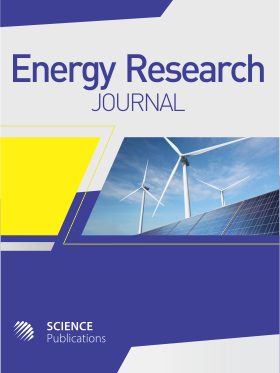Bioethanol Production from Rice Straw
- 1 Mahidol University, Thailand
Abstract
Problem statement: Rice straw has been treated with different chemical (acid, alkali) and physical (subcritical water, ultrasound) methods to convert lignocellulose material to sugar. In addition enzyme treatment of pretreated samples has been applied to improve the conversion of lignocellulose material in sugar. Approach: Sulfuric acid at concentration of 1-9% was applied for acid treatment. For alkali treatment was sodium hydroxide solution at concentration of 1-5% used. Subcritical water treatment carried out at 160°C (5 bar) and 200°C (15 bar) for 10 min. Ultrasound was applied as combination method after acid pretreatment. The condition during ultrasound treatment was 40 W at 50°C and 10 min. Finally the pretreated sample was fermented using Saccharomyces cerevisiae yeast and the amount of produced ethanol was measured. Results: Acid treatment at 121°C, 15 min is an effective pretreatment method for converting lignocellulose to sugar. Up to 21.45% sugar w/w could be measure after acid treatment. Combination of chemical pretreatment and subsequent enzyme treatment increased the sugar yield drastically. Up to 37 and 28% sugar w/w could be achieved for acid and alkali pretreated samples respectively. Subcritical Water (SCW) treatment method is an effective physical method. SCW treatment at 200°C and 10 min followed by enzyme treatment yielded up to 17% sugar w/w. Combination of acid pretreatment with ultrasonic before enzyme treatment increased the conversion of lignocelluloses to sugar. Sugar yield up to 44% w/w after combination of acid and ultrasonic pretreatment and subsequent enzyme treatment could be achieved. Fermentation of pretreated rice straw shown that after 3 days fermentation most of sugar (55-65%) will be converted to bioethanol. The remaining sugar could not be converted in ethanol even after 6 days fermentation. Under these conditions, the maximum ethanol of 1.69% (v/v) was obtained. Conclusion: The combination method of acid pretreatment combined with ultrasound and subsequent enzyme treatment result the highest conversion of lignocelluse in rice straw to sugar and consequently, highest ethanol concentration after 6 days fermentation with S. cerevisae yeast.
DOI: https://doi.org/10.3844/erjsp.2010.26.31

- 8,093 Views
- 14,489 Downloads
- 109 Citations
Download
Keywords
- Rice straw
- bio ethanol
- subcritical water
- ultrasound
- sugar
- enzymes
